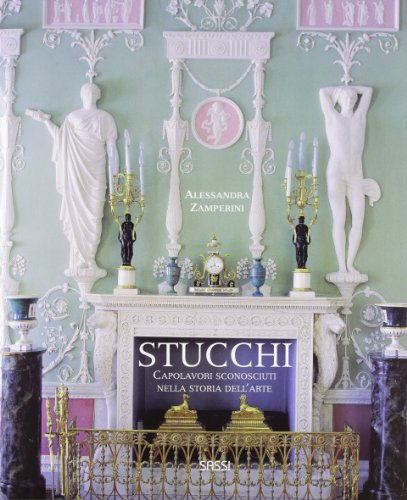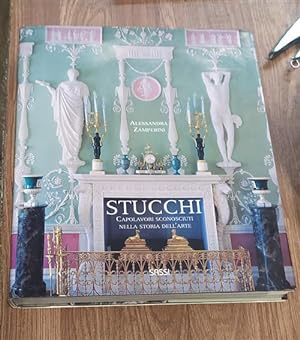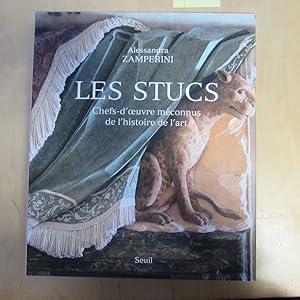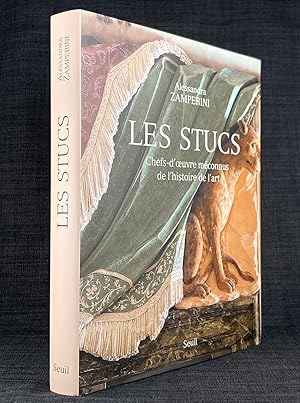zamperini alessandra sassi luca (4 risultati)
Tipo di articolo
- Tutti gli articoli
- Libri (4)
- Riviste e Giornali
- Fumetti
- Spartiti
- Arte, Stampe e Poster
- Fotografie
- Mappe
-
Manoscritti e
Collezionismo cartaceo
Condizioni
Legatura
- Tutte
- Rilegato
- Brossura
Ulteriori caratteristiche
- Prima edizione
- Copia autografata
- Sovraccoperta (1)
- Con foto (3)
- No print on demand
Paese del venditore
Valutazione venditore
-
Stucchi. Capolavori Sconosciuti nella Storia dell'Arte
Editore: Sassi, San Vito di Leguzzano Vi, 2012
ISBN 10: 8896045495ISBN 13: 9788896045497
Da: Il Salvalibro s.n.c. di Moscati Giovanni, Foligno, PG, Italia
Libro
Condizione: New. Mm 275x325 Volume in copertina rigida con sovracoperta 352 pagine con 300 illustrazioni a colori nel testo. Condizioni del libro: nuovo - brand new in original shrink-wrap Spedizione in 24 ore dalla conferma dell'ordine.
-
Stucchi. Capolavori Sconosciuti Nella Storia Dell'arte
Editore: Sassi, 2012
ISBN 10: 8896045495ISBN 13: 9788896045497
Da: Piazza del Libro, Trebaseleghe, PD, Italia
Libro
Condizione: Ottime condizioni. Rimanenza di magazzino, libro nuovo ma che presenta vari difetti di copertina e bordi pagine Dettagli LibroSku: PZZLB8768ISBN: 9788896045497Titolo: Stucchi. Capolavori Sconosciuti Nella Storia Dell'arteAutore: Alessandra Zamperini, Luca SassiEditore: SassiAnno: 2012Pagine: 352Formato: RilegatoQuesto volume rappresenta il primo tentativo organico di raccontare la storia dello stucco in Europa. Poco studiata dalla storiografia in quanto arte applicata e dunque non degna dell'attenzione riservata normalmente a pittura, scultura e architettura, lo stucco nasce in epoca egizia e si sviluppa con sorprendenti risultati durante tutta la storia dell'arte, conoscendo un periodo di grande fioritura in epoca classica e poi a partire dal Rinascimento fino al diciannovesimo secolo. Ritenuto erroneamente dal senso comune un'arte semplicemente bianca, monocroma e dunque un po' noiosa, lo stucco ha invece conosciuto fasi di grande espressione policroma: basti pensare alle famose Oche di Meidum (2620 a.C, Il Cairo, Museo Nazionale), già straordinariam.
-
Les stucs - Chefs-d'oeuvre méconnus de l'histoire de l'art
Editore: Paris, Seuil Verlag, 2012
ISBN 10: 2021078256ISBN 13: 9782021078251
Da: Bookstore-Online, Mattsies, Germania
Libro
Hardcover / Pappeinband. Condizione: Sehr gut. Auflage aus dem Buch nicht ersichtlich. 351 Seiten Das Buch selbst befindet sich in einem gebrauchten sehr guten Zustand. Es ist gebraucht und hat nur geringe Gebrauchsspuren, wie Verfärbung der Schnittkanten, leichter Abrieb an den Kanten vom Einband. Der Schutzumschlag ist an den Kanten etwas berieben und minimal geknickt, alles nicht übermäßig. Im Buch keine Einträge oder Beschriftungen. Nichtraucherbuch. Bitte bedenken sie, dass das automatisch berechnete Porto bei Versand ins Ausland in diesem Fall nicht ausreicht. Das Gewicht ist überdurchschnittlich hoch und das tatsächliche Porto ist deutlich höher, als berechnet. Bitte schreiben sie uns vorher an, wenn sie dieses Buch aus dem Ausland bestellen wollen. Rik060508SK Sprache: Französisch Gewicht in Gramm: 3200.
-
Les stucs. Chefs-d'oeuvre méconnus de l'histoire de l'art.
Da: Hatt Rare Books ILAB & CINOA, Hägersten, Svezia
Publisher's boards, pictorial dustacket, practically as new. Paris, Seuil, 2012. 4to. 32,5 x 27,5 cms. 352 pp. Richly illustrated with beautiful colour photographs. With bibliography and index. This book is the first to present an almost exhaustive history of stucco in Europe, subdivided into sections on Antiquity, the Middle Ages, the Renaissance, and the 16-19th centuries. As an applied art, stucco has been little studied and has not benefited from the full attention lavished on painting, sculpture and architecture. However, the stucco - used to cover ceilings and walls, both inside and outside - and whose technique was born in ancient Egypt, enjoys an intriguing history, experiencing a period of great flowering in the classical period, then from the Renaissance until the 19th century. Wrongly considered by common sense to be simply white, monochrome and therefore a somewhat boring art, it has nevertheless been the subject of significant phases of polychrome expression since Antiquity. The discovery of the Domus aurea in Rome in the 16th century initiated its consecration in the Renaissance, in particular in the Vatican Lodges of Raphael or with its introduction into France by François I at the Château de Fontainebleau. Born from these premises, the stucco decoration came to experience an immense fortune in the whole of Europe during the Baroque period, then during the Rococo when it follows a more graceful and polychrome declination, to develop, in the 19th century, according to the styles and forms specific to eclecticism. The stucco therefore never remained on the sidelines. Constantly associated with other techniques, its presence enlivens walls and ceilings, its colors transmit luminosity and chiaroscuro, in a kaleidoscope of shapes and vibrations. This is what this reference work endeavors to highlight, taking up these artistically essential masterpieces of art history. - - - Ce livre est le premier à présenter une histoire quasi exhaustive du stuc en Europe. Comme art appliqué, le stuc a été peu étudié par l'historiographie et n'a pas bénéficié de toute l'attention prodiguée à la peinture, à la sculpture et à l'architecture. Pourtant, le stuc - enduit teinté dans la masse, à base de chaux, utilisé en recouvrement des plafonds et des murs, aussi bien à l'intérieur qu'à l'extérieur - et dont la technique voit le jour dans l'Égypte ancienne, jouit dans l'histoire de l'art d'un passé intrigant, connaissant une période de grande floraison à l'époque classique, puis de la Renaissance jusqu'au XIXe siècle. Considéré à tort par le sens commun comme un art simplement blanc, monochrome et donc un peu ennuyeux, il a pourtant été l'objet de phases importantes d'expression polychrome, et ce, dès l'Antiquité. Si son usage fut limité au Moyen Âge, la découverte de la Domus aureaà Rome au XVIe siècle initia sa consécration à la Renaissance, en particulier dans les Loges du Vatican de Raphaël ou avec son introduction en France par François Ier au château de Fontainebleau. Née de ces prémisses, la décoration en stuc va ensuite connaître une immense fortune dans l'Europe entière à la période baroque, puis pendant le Rococo où il suit une déclinaison plus gracieuse et polychrome, pour se développer, au XIXe siècle, selon les styles et les formes propres à l'éclectisme. Le stuc n'est donc jamais resté en marge. Constamment associé aux autres techniques, sa présence anime des murs et des plafonds, ses couleurs transmettent la luminosité et le clair-obscur, dans un caléidoscope de formes et de vibrations qui expriment encore aujourd'hui l'intelligence des cultures qui ont su valoriser ses incroyables potentialités. C'est ce que s'attache à mettre en lumière cet ouvrage de référence, relevant ce pari artistiquement essentiel de remettre au premier plan ces chefs-d' uvre méconnus de l'histoire de l'art.





